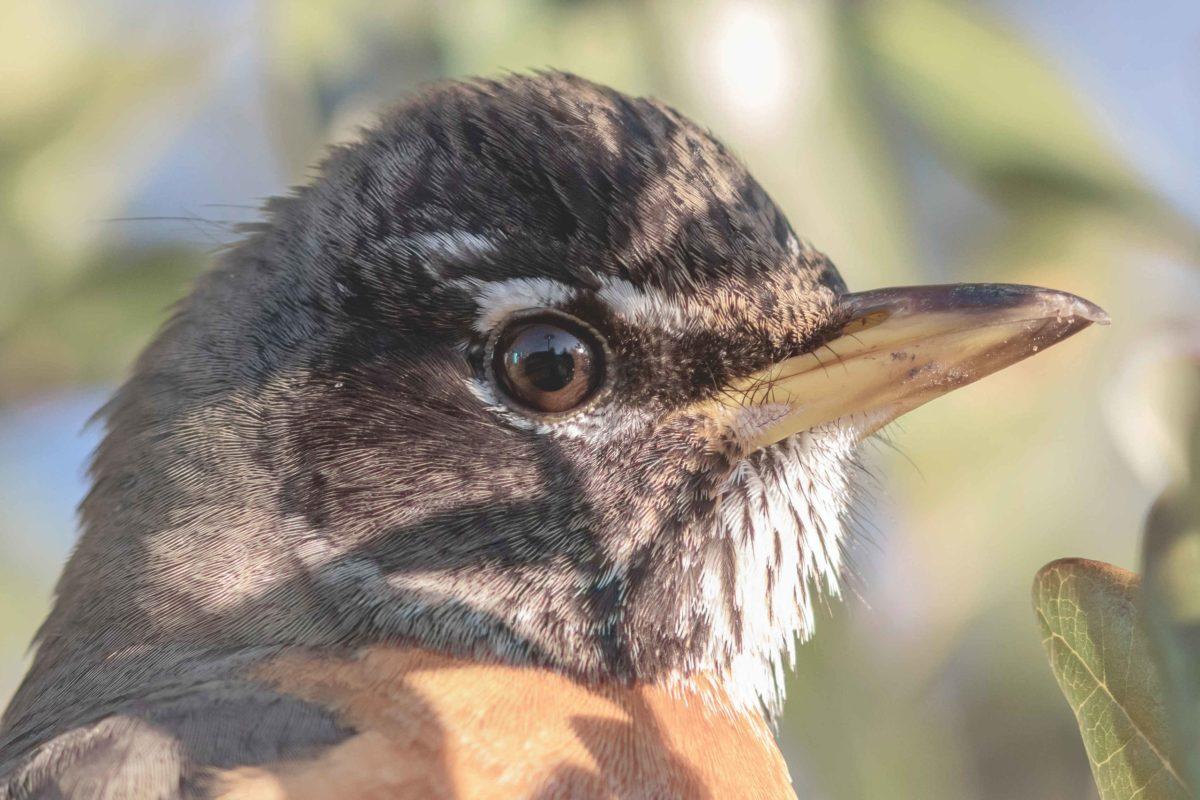American Robins are among the most common garden birds in North America and have a popular presence in parks and lawns Most know these birds from their rich caroling that can be heard from the rise of dawn. A robin’s chest and belly are a warm orange, while its back and wings are a dull gray with a black head. Robins also have white spots around their eyes with a bright yellow bill and typically display upright posture and a titled head. Their song is a rhythmic series of 10 or so notes,which is often cheerful.
American Robins are quite vocal songbirds. Birds vocalize through songs and calls, which are used for a variety of purposes, including attracting mates, establishing territory and expressing emotions. Songs are most commonly used by the males of the species, and for certain species, the same series of notes is preserved for several generations. Young or subadult birds have a genetic inclination toward their own songs but learn the details from adults as they grow. The experienced can identify birds by song alone. One might consider familiarizing themselves with the song of the American Robin , as they are often heard singing in the mornings.
As seen in this photo, the robins appear to be rounder than they usually are. Most birds are seen this way, especially on cold mornings. Fluffing up helps them trap air between their many layers of feathers, creating insulation in the same way a puffer jacket does.
Robins have a generalized diet, meaning they are not restricted by preferences like many birds. Thriving on variety, robins can commonly be seen foraging on the ground looking for seeds, insects, worms, or berries — in the right season. Robins’ widespread presence across North America is in part thanks to their adaptability to different terrains, as they can survive environments both wild and manmade.
When seen out of context, it is hard to believe these feet belong to a small songbird and not a velociraptor. This is fitting, as modern day birds are actually directly descended from theropod dinosaurs. Their ancestors gradually evolved specialized features that we now associate with birds, like talons.







